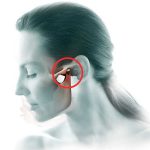Cyst, Formation and Detrimental Effects of Cysts
A cyst is a pathological cavity surrounded by a membrane that grows from the center outward.
As cysts enlarge, the pressure they exert can lead to resorption of the roots of neighboring teeth. In cases where the cyst becomes significantly large, loss of adjacent teeth may occur.
Formation and Detrimental Effects of Cysts:
Cysts may develop from residual embryonic cells embedded within tissues during developmental stages, or as a result of pathological changes at the root apex caused by irritation from an infected root canal. They can also form when cystic lesions associated with the root apex are left behind in the jawbone following tooth extraction.
Cystic lesions caused by impacted teeth have also been observed.
These lesions can result in bone destruction, spontaneous fractures in the jawbone, and displacement or damage to adjacent teeth. To prevent bone loss, the affected tooth should be extracted and the cyst should be thoroughly cleaned.
In rare cases, if a cyst spreads over a wide area, it may transform into a tumor and cause spontaneous fractures in the jawbone.
Cyst Surgeries
The fundamental principle in cyst surgery is the complete removal of the cyst along with its membrane.
Roots of adjacent teeth that are not directly involved with the cystic lesion should be preserved, and teeth located within the cyst should be retained using the apical resection method.
In certain types of cysts, a drain may be placed inside the cyst to promote the eruption of impacted teeth that were pushed and retained due to pressure from the cyst. This drain is changed weekly to reduce the internal pressure, promote new bone formation around the cyst, and facilitate the eruption of the impacted teeth.
Cyst treatment should not result in functional or aesthetic problems. Therefore, reconstruction of large cyst cavities with appropriate bone grafts (bone powder) and membranes (barriers) is essential.


